The Advanced Startup options menu in Windows provides access to multiple troubleshooting tools. You can find below a number of methods to Access or Open Advanced Startup options in Windows 11/10.

Open Advanced Startup Options in Windows 11 & 10
If your computer is not booting up or going through problems, you need to know the steps to navigate to Advanced Startup options screen on your computer.
Once you are able to Access Advanced Startup screen, you will find the options to perform Startup Repair, Restore/Recover computer, Revert back to previous version of Windows and use other tools to find and fix problems on your computer.
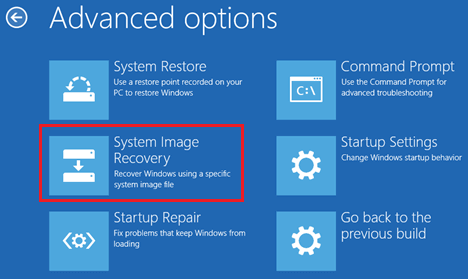
You can find below multiple ways to Access Advanced Startup Options on your Windows 11/10 computer.
1. Restart the Computer in Advanced Startup Mode
If you are able to login to the computer, you can access Advanced startup options using the Settings menu.
1. Go to Settings > System > Recovery > click on Restart Now button located next to Advanced Startup.

Windows 10: Go to Settings > Update & Security > Select Recovery in the left pane. In the right-pane, click on Restart now button located under “Advanced Startup” section.
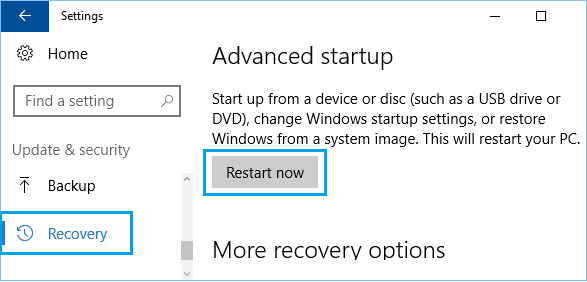
Once you click on Restart now, you will be logged out and your computer will restart with Advanced Startup options.
2. Restart the Computer in Advanced Startup Mode Using Shift Key
Another way to open Advanced Startup options in Windows is by restarting the computer while holding down the Shift Key.
1. Click on the Start (1) button and click on the Power button (2) in Start menu.
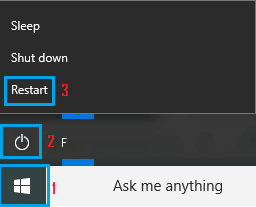
2. Next, press and hold the Shift key on the keyboard of your computer and click on Restart (3).
Once the computer restarts, you should find it opening with Advanced startup options screen.
3. Access Advanced Startup From Login Screen
If you are unable to Login to your User Account, you can Access Advanced Startup options by clicking on the Power Icon located at bottom right corner of the screen.
1. Open the computer (if it is not open) and click on the Power icon (1) located at the bottom-right corner of your screen.
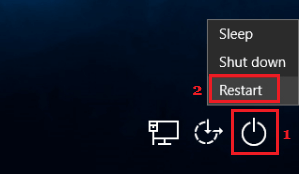
2. Next, press and hold the Shift Key on the keyboard of your computer and click on Restart (2) option.
Once your computer restarts, you will be able to use Advanced Startup options.
4. Access Advanced Startup Using Command Prompt
If you prefer using Command prompt, you can follow the steps below to access Advanced Startup options on your Windows 11/10 computer.
1. Right-click on the Start button and click PowerShell (Admin).
2. On the Command Prompt window, type shutdown /r /o /f /t 00 and press the Enter key on the keyboard of your computer.

Once the above command is executed, you will find Windows 10 starting with Advanced Startup screen.
5. Access Advanced Startup Using Keyboard Shortcut
If you are unable to open the Start Menu on your computer, you can access Advanced Startup options by using Ctrl + Alt + Delete keyboard shortcut.
1. Press Ctrl + Alt + Delete keys on the keyboard of your computer.
2. On the next screen, click on the Power button (1) located at the bottom-right corner of your screen.
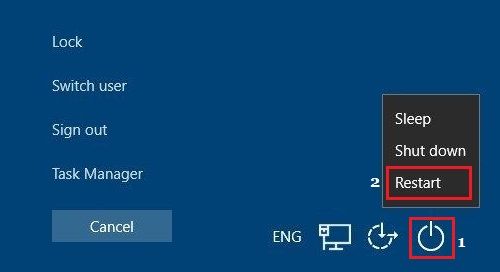
3. Next, press and hold the Shift key on the keyboard of your computer and click on the Restart (2) option.
When your computer restarts, it will open with Advanced Startup screen.
6. Access Advanced Startup Using Bootable USB Drive
If you are unable to boot the computer, you can Access Advanced Startup options by using a Bootable USB Drive to restart the computer.
1. Shut down the computer by pressing the Power button.
2. Insert Bootable Windows USB Drive into the USB port of your computer and Press the Power button to start your computer.
3. Once your computer starts, click the Next button.
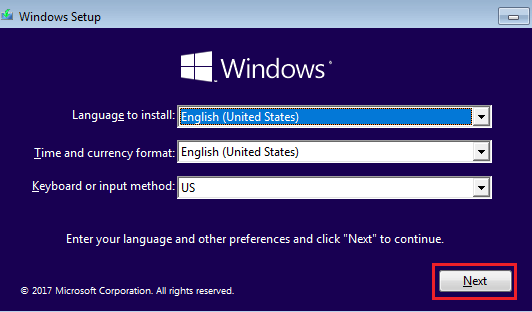
4. On the next screen, click on Repair your computer option located at the bottom-left corner of your screen.
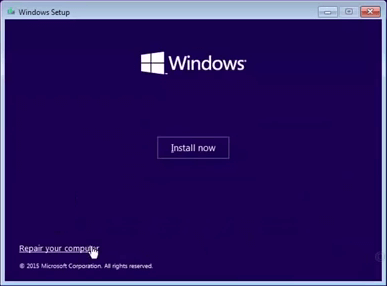
5. Once you click on the Repair option, you will be taken to Advanced startup screen.
7. Access Advanced Startup Using Automatic Repair
If your computer is not loading Windows operating system, you can access Advanced Startup by forcing the computer to enter Recovery Mode.
1. Press the Power button to start the computer.
2. Since your computer is unable to load Windows OS, it should start a Self Diagnostic Power-On Self-Test (POST).
3. Immediately after Power-On Self-Test (POST) is completed, press the Power button to shutdown the computer.
4. Repeat steps 1 to 3 two more times.
5. During the third restart, your computer should enter into Windows Recovery Environment, where you will see your computer performing a number of diagnostic tests to fix booting problems.
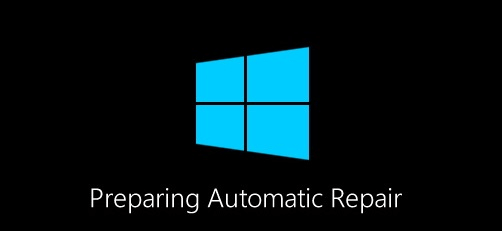
6. When prompted, choose your User Account, enter the Password for your User Account and click on Continue.
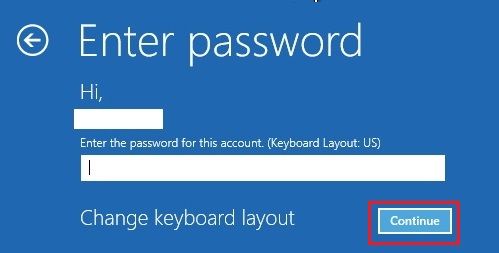
7. After diagnostic tests are completed, click on Advanced options.
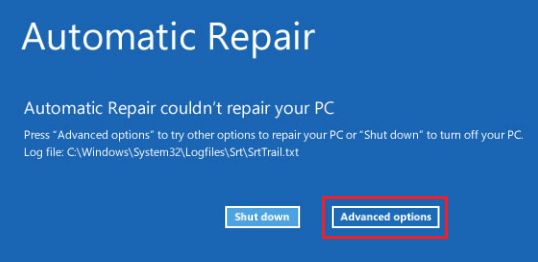
8. Once you click on Advanced options, you will be able to access Advanced startup menu on your computer.